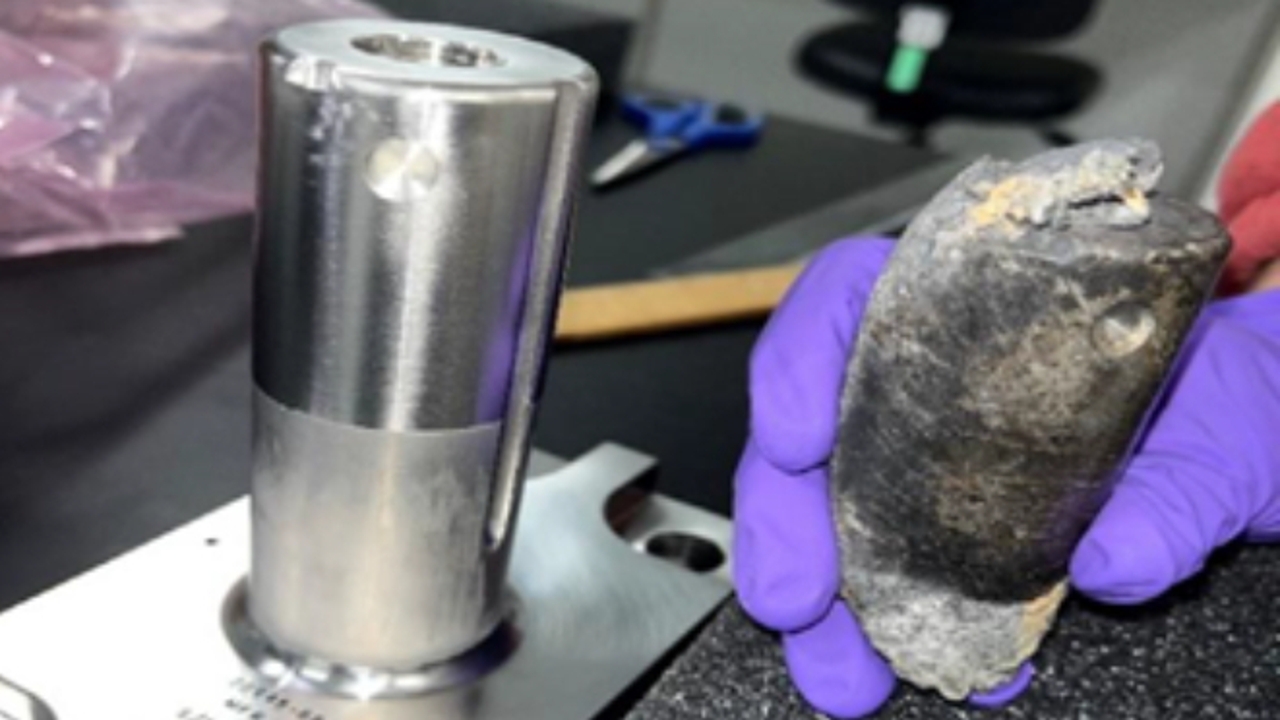The POT has confirmed that the object that on March 8 hit a house in the state of Florida and crossed its two plants is a waste of International Space Station. After being analyzed in the laboratories of the Kennedy Space Centerspace agency scientists have verified that comes from EP-9, a charging platform with spent batteries that the ISS launched into space in March 2021 with the aim that it would disintegrate upon re-entering the atmosphere, something that did not completely happen.
As explained by NASA, the object does not belong to the discarded batteries, but is what remains of one of the struts that held them to the EP-9 cargo pallet. The platform, with the payload mounted, has a mass of more than two and a half tons, while the object that partially survived reentry It weighs 725 grams and measures 10 x 4 centimeters, a size similar to a soda can. The prop is made of inconela metal alloy that can withstand extreme conditions of high temperatures, pressure or mechanical loads.
“EP-9 was expected to burn up completely during atmospheric entry from Earth on March 8, 2024. However, a piece of hardware survived re-entry and impacted a home in Naples, Florida. “NASA collected the object in cooperation with the owner and analyzed it at the agency's Kennedy Space Center in Florida,” the agency explains on its blog.
Hello. Looks like one of those pieces missed Ft Myers and landed in my house in Naples.
Tore through the roof and went through 2 floors. Almost his my son.
Can you please assist with getting NASA to connect with me? I've left messages and emails without a response. pic.twitter.com/Yi29f3EwyV— Alejandro Otero (@Alejandro0tero) March 15, 2024
The owner of the home where the space debris fell, Alejandro Oterowas not there at that time, but yes his son. “It was a tremendous noise. He almost hit my son. He was two rooms away and heard everything,” Otero explained to Wink. “Something It went through the house and then made a big hole in the floor and ceiling. “When we heard that, we thought, impossible, and I immediately thought it was a meteorite.”
The impact occurred 5 minutes later after the United States Space Command recorded the re-entry into the atmosphere of debris from the International Space Station heading to southwest Floridawhich made it possible to establish the relationship that NASA has now confirmed.
The loading platform was the largest object ever launched from the ISS for uncontrolled reentry. Normally, the astronauts would have disposed of the spent batteries by placing the pallet in a Japanese HTV freighter which would have been destroyed in the atmosphere following controlled re-entry. But lacking these ships since 2020 and being a platform that can only be transported on the HTV, it was launched into space on March 11, 2021.
NASA has indicated that will investigate the entire event “to determine the cause of the survival of the debris and update models and analysis, as necessary. “These models require detailed input parameters and are periodically updated when debris is found to have survived atmospheric re-entry into the ground.”

